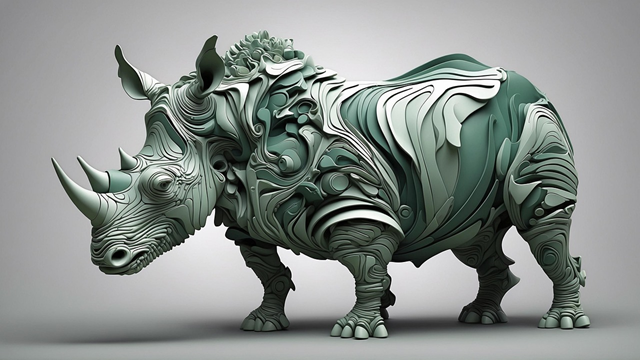British Museum and Asprey Studio Bring Dürer's 'The Rhinoceros' to the Bitcoin Blockchain Through One-of-a-Kind Silver Sculptures

In a daring fusion of classical art and modern technology, the British Museum has partnered with Asprey Studio to create a collection of 11 sterling silver sculptures based on Albrecht Dürer's famous 1515 print “The Rhinoceros.” Each of these one-of-a-kind physical pieces will be linked to a unique digital inscription on the Bitcoin blockchain via the Ordinals protocol.
The art project is not only a tribute to the visual genius of the Renaissance, but also a bold step toward preserving and authenticating art in the digital age. According to Asprey Studio, these digital inscriptions act as a “modern genealogy,” serving as an irreversible proof of origin for each piece.
“It’s a parent-child inscription,” explains Asprey’s creative director Ali Walker. “Asprey Studio and the British Museum are the parents, and the sculpture is the only child.”
Crafting the 40cm silver sculptures is no easy task. The process begins with a digital modelling of the original print, then breaking the piece into pieces for easier workability and finally hand-welding them together – a highly skilled and months-long process. Each piece is made to order, and the digital inscription is delivered to the buyer first.
What’s unique about the project is that it’s not simply a matter of transferring an ancient print onto the blockchain or turning it into an NFT. Instead, it’s a completely new reimagining – a contemporary interpretation that has historical, technological and legal depth. “It’s our way of preserving artistic heritage in a new form – encrypted, immutable and permanent on the blockchain,” says Walker.
Dürer: A Pioneer of Art and Intellectual Property
Albrecht Dürer, born in 1471, was one of the most influential painters of the German Renaissance. Although he never saw a rhinoceros in person, he used descriptions from Portuguese traders to create one of the most iconic images in Western printmaking history. In addition to his artistic talents, Dürer is also credited with initiating the concept of copyright in art, designing his own personal emblems and taking legal action to protect his work from unauthorized copying.
“If he lived today, Dürer would definitely use NFTs,” Walker comments. “He was not only creative, but also very savvy about intellectual property, something digital artists today are facing in the face of AI.”
Heritage and Web3: A New Direction for Traditional Museums
This is not the first time the British Museum has stepped into the world of Web3. Earlier in 2021, the institution collaborated with French startup LaCollection to issue a series of NFTs from its collection, including famous artists such as Hokusai and Turner.
This project marks the next step in the innovation journey of one of the world's oldest museums, proving that heritage is not just something to be stored – but also something to be interacted with, adapted and brought to life in the digital age.
With the "The Rhinoceros" sculpture series digitized and engraved on the Bitcoin blockchain, the past and future of art meet not only in solid silver but also in immutable lines of code – a place where Dürer, were he still alive, would probably feel at home.
